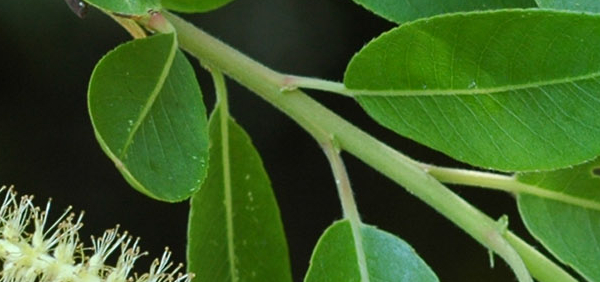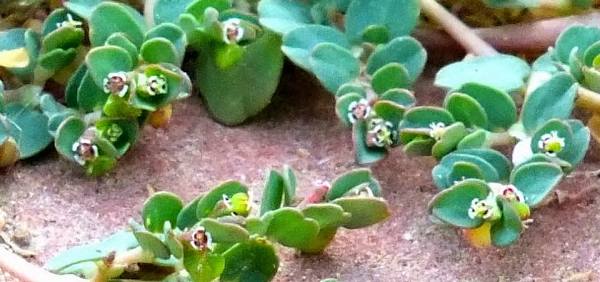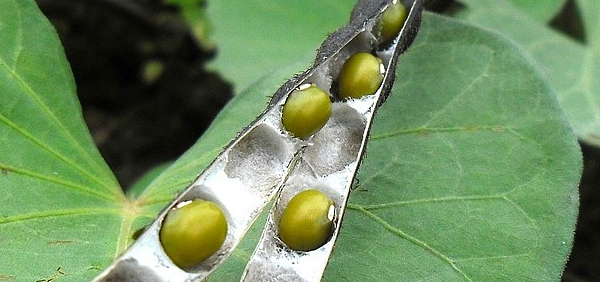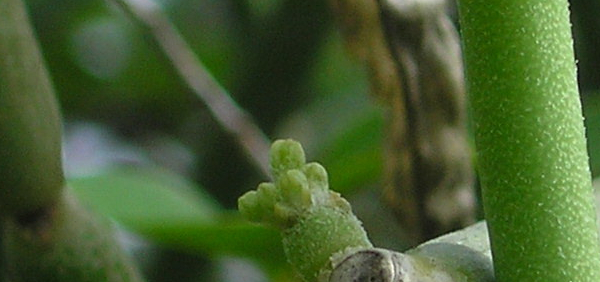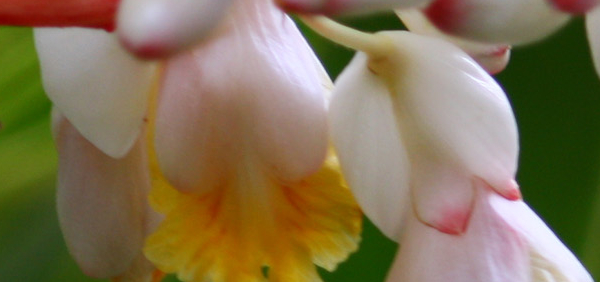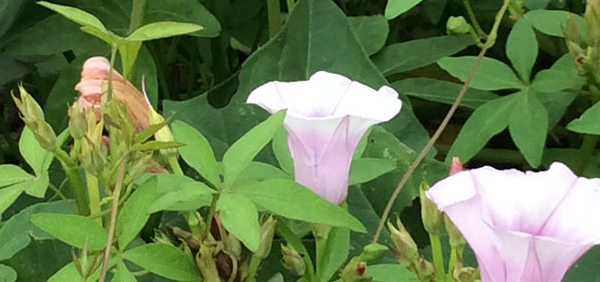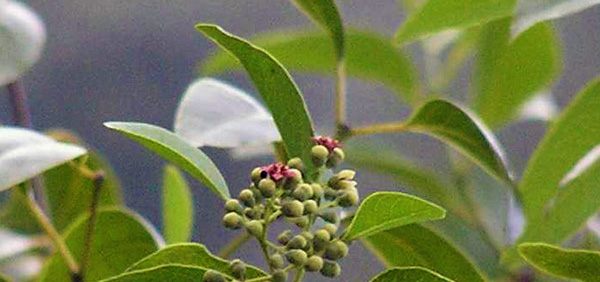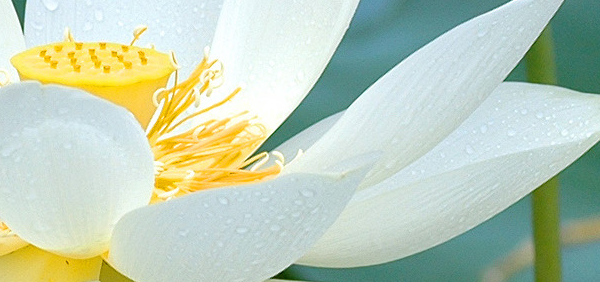barahi :

Morphology:
Dioscorea bulbifera, is an invasive plant not native to Florida but whose present-day distribution includes most of the state. It is a vigorously twining, long-stemmed herbaceous vine which may arise from an underground tuber, although often tubers are inconspicuous or absent. The stems are round to slightly angled in cross section and they twine coutner-clockwise. Conspicuous aerial tubers (called bulbils) are pale, round to globose in shape, up to 13 cm wide and are formed in leaf axils. It is these bulbils that give D. bulbifera the common name "air potato."
The leaves are attractive, alternate, broadly heart-shaped, up to 20 cm long and attached by long petioles. They are divided longitudinally into lobes by prominent arching veins all radiating out from a single point of origin where the petiole attaches to the leaf. Flowers rarely occur in D. bulbifera; where occurring, they are small, pale green and fragrant, arising from leaf axils. The fruit is a capsule and the seeds partially winged (Langland and Burks 1998, Langeland 2001).
Histology:
Rhizome shows a cork composed of 10 to 15 layers of thick-walled, tangentially elongated rectangular cells; outer few cells filled with reddish-brown contents; cortex consists of oval to elliptical, thin-walled parenchymatous cells; ground tissue, forming major portion of drug composed of oval to polygonal cells having a few scattered closed vascular bundles; starch grains found both in cortex and ground tissues, but abundant in ground tissue, rounded to oval, three sided with rounded angles or rod-shaped, simple, solitary or in groups, 11 to 28 n in diameter; hilum present at the narrower extremity.- » Classification and names of barahi
- » Synonyms and definitions of barahi
- » Drug Properties of barahi
- » Chemical Constituents of barahi
- » Standardization of barahi
- » Parts used and Dosage of barahi
- » Morphology and Histology of barahi
- » Distribution and Conservation of barahi
- » Cultivation of barahi
- » barahi in the market
- » Medicinal Uses of barahi
- » Researches and clinical trails of barahi
- » barahi in other sytems of medicine
- » Ayurvedic formulations with barahi
- » Images of barahi




